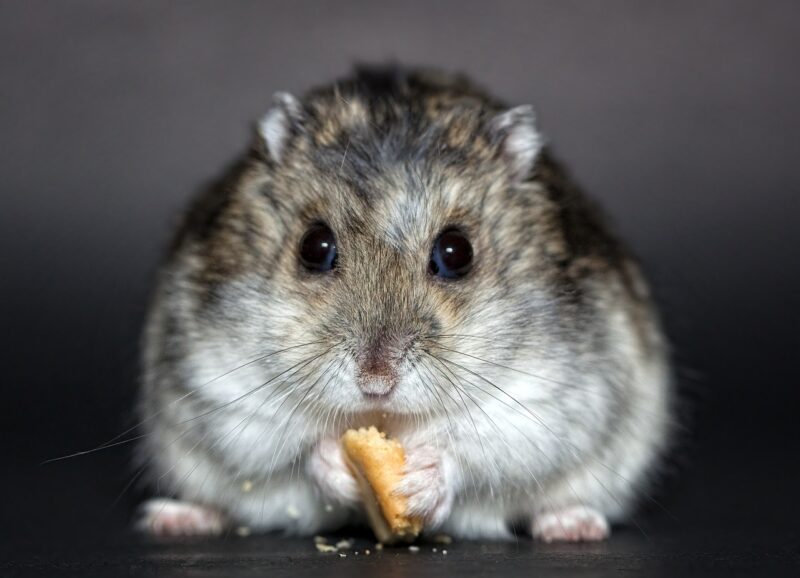Everything You Didn’t Know About Hamster Behavior: How to Interpret Your Pet’s Quirks
November 13, 2024

Hamsters are among the most popular pets, cherished for their small size, adorable features, and captivating behaviors. However, while many pet owners are familiar with basic hamster care, there’s a treasure trove of fascinating facts about these little creatures that often go unnoticed. Understanding hamster behavior can significantly enhance the bond you share with your pet and help you identify what they’re thinking or feeling. In this article, we will explore the unique behaviors of hamsters, their body language, and how you can interpret their quirky traits.
1. Why Understanding Hamster Behavior is Important
Hamsters are not just cute little fuzzballs; they have complex personalities and behaviors. Recognizing these quirks allows you to create an environment that caters to their needs, fosters their well-being, and strengthens the human-animal bond. Additionally, understanding behavior can help you identify health issues or stressors in your pet’s life.
Here are a few reasons why it’s crucial to understand your hamster’s behavior:
- Health Monitoring: Changes in behavior can be a sign of health issues. Being observant helps catch these problems early.
- Reduced Stress: Knowing when your hamster is comfortable or stressed can help you adjust their habitat accordingly.
- Enhanced Interaction: Understanding their behavior promotes better training, handling, and interactions with your pet.
2. Common Hamster Behaviors and Their Meanings
To become a more attuned hamster owner, let’s explore some common behaviors and what they signify.
2.1. Nesting and Burrowing
Nesting is a natural instinct for hamsters, stemming from their wild ancestors who create nests for safety, warmth, and breeding. If your hamster spends time burrowing in bedding or rearranging materials in its cage, it is preparing a cozy space to feel secure.
Interpretation: Hamsters that frequently nest or burrow are likely seeking comfort or safety. Ensure they have ample bedding material to satisfy this instinct.
2.2. Wheel Running
Providing a wheel is a staple of hamster care. When you see your pet running energetically on the wheel, it’s a sign that they are feeling healthy and lively. However, if your hamster is running excessively, it might indicate boredom or stress.
Interpretation: A happy hamster enjoys its wheel for exercise. If they’re constantly on it, consider providing additional toys or changes in their environment.
2.3. Chewing Objects
Hamsters have ever-growing teeth that require constant wearing down, making chewing their natural behavior. If your pet chews on cage bars or toys, it’s both a requirement and a way to relieve stress.
Interpretation: Chewing is essential for maintaining dental health, but if your hamster chews excessively, they may need more enrichment activities to avoid boredom.
2.4. Sleeping Patterns
As nocturnal animals, hamsters are primarily active during the night. If you find your pet sleeping during the day, it is completely normal. However, if they are awake and restless during the night, it might signal stress or discomfort.
Interpretation: Recognizing your hamster’s sleep schedule helps in understanding their activity levels. Ensure they have a quiet, dark space to rest undisturbed during the day.
3. Understanding Body Language in Hamsters
Reading your hamster’s body language is crucial in interpreting their feelings and intentions. Here are some signs to watch for:
3.1. Whisker Position
Whiskers are not just for show; they convey emotions. When a hamster’s whiskers are pushed forward, it indicates curiosity and exploration. Conversely, whiskers pulled back may imply fear or anxiety.
Interpretation: Monitor whisker position during interactions to gauge comfort levels.
3.2. Tail Movement
Although hamsters lack the long, expressive tails of other animals, their tiny tails can still indicate mood. Rapid tail wagging might suggest excitement, while stillness can imply fear or stress.
Interpretation: Pay attention to tail movements for a quick assessment of their emotional state.
3.3. Eyes and Ears
Hamsters have large, expressive eyes. If your hamster’s eyes are wide open and the ears are perked, it typically indicates alertness and curiosity. If withdrawn, they may feel threatened and need to retreat.
Interpretation: Observe eye and ear position to understand how safe and engaged your hamster feels in its environment.
4. The Importance of Social Interaction
While hamsters are often seen as solitary animals, they benefit greatly from regular interaction with their owners. To ensure a well-rounded relationship with your pet, remember:
- Gentle Handling: Always approach your hamster calmly to foster trust. Allow it to explore you rather than forcing interactions.
- Enrichment Activities: Use tunnels, toys, and other activities to stimulate your hamster’s natural instincts, preventing boredom and enhancing engagement.
- Observation: Spend quiet time together, allowing your hamster to become accustomed to your presence. This will help develop a bond over time.
5. Recognizing Signs of Stress or Distress
Understanding what stresses your hamster is key to ensuring a healthy and happy life. Here are a few signs to look for:
5.1. Excessive Grooming
While some grooming is normal, excessive grooming can point to anxiety or skin irritation. If you notice patches of missing fur, consult a vet.
Interpretation: Monitor grooming behavior and seek veterinary advice if you notice changes.
5.2. Hiding More Often
If your hamster which usually enjoys interacting becomes withdrawn and spends more time hiding, this could indicate stress.
Interpretation: It may be necessary to evaluate environmental factors or other stressors affecting your pet.
5.3. Aggressive Behavior
If your hamster suddenly bites or becomes aggressive, this may stem from fear or pain. Changes in behavior should not be ignored.
Interpretation: Take note of any sudden behavioral changes and assess if a trip to the vet is needed.
Conclusion
Understanding hamster behavior is key to nurturing a thriving relationship with your pet. By familiarizing yourself with common behaviors, body language, and stress indicators, you create a more harmonious living space for your hamster, allowing it to express its true personality. Always strive to provide enrichment, safety, and love for your furry friend. Whether your hamster is a curious explorer or a timid snuggler, recognizing its unique quirks will deepen the bond between pet and owner. So dive deep into the fascinating world of your little friend, and enjoy every quirky moment you share together!








